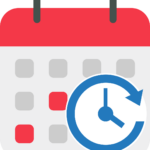Over the years I have followed digital strategies for tourist destinations, independent hotels, restaurants, farmhouses, travel agencies and tour operators. Each project was different, with specific needs, more or less ambitious objectives and often very distant contexts. Some strategies have brought great results, others have proved to be less effective than expected, despite the commitment and planning.
Summary
Over time, however, I started to notice a common thread: there were elements that repeated, errors that often emerged, signs that something (even in the most well structured projects) was not really working. It was that moment that marked a change of course in my way of seeing and doing digital marketing.
Today I work differently, with a more critical look, deeper and decidedly more human. In this article I will tell you because I decided to change approach todigital marketingIn tourism, what I stopped doing, what has really worked in the most recent projects and which method I follow today when I next to the travel customers and food.
The old approach: complete but no longer sufficient
For a long time I followed the classic scheme:
- sito web ben fatto;
- SEO curata;
- social media attivi;
- Periodic newsletter.
It was the system that each project had to have. And for a while he worked. But in recent years I have started to feel that something was not back. The strategies seemed complete but the results did not always arrive. The traffic was there but the conversions are not. People found us but they didn't stay.
So I started asking me questions. And when you start asking you the right questions, the old schemes begin to creak.
The turning point: starting from the relationships, not from the contents
Today my vision has changed. I no longer start from the channels, but from people. I no longer start from the editorial calendar, but from the conversations. I want to understand who I have in front of it, what he wants, what brakes it.
Once, I would have said: "We have to publish two posts a week". Today I say: "Do we have something true to say? If so, how can we make it useful and listened to?".
The projects that made me change vision
A particular project marked this change. It was a small village with a beautiful and social site well cared for. But nobody looked at them. We made a courageous choice: stop everything for 30 days. No posts, no campaigns. Only listening. We have:
- interviewed who had already been there;
- spoken with the inhabitants;
- Places with new eyes observed.
From that listening, true, profound, human content were born. The results? Traffic has grown but above all trust has increased.
What I stopped doing
In my work I eliminated everything that seemed only "dutiful":
- Posts published only to respect the editorial plan;
- Seo content full of keyword but without soul;
- Automations designed only to sell, without listening.
I prefer:
- a true newsletter once a month;
- a post that really touches;
- A strategy that reflects what we really are.
My method today
Today I work with few tools, carefully chosen:
- Google Search Consoleto understand the real research intentions;
- real interviewsas a basis for authentic content;
- Chat GPTas a creative support;
- CRMTo plan less but better.
But above all I use time: to listen, to understand, to let the ideas sedate before communicating them.
The results after the change
Since I changed approach, I saw concrete results:
- more authentic interactions;
- less useless traffic;
- more real requests from potential customers;
- More word of mouth and spontaneous collaboration.
A farm has increased reservations with a series of custom -written emails. A destination received more contacts thanks to a well -kept and human FAQ page. It is not just strategy: it is cure.
What do I recommend to those in transition
If you feel that your digital communication no longer represents you, I recommend you to:
- ascoltare il tuo pubblico prima di scrivere;
- trovare il tuo tono, non quello che “funziona”;
- Don't be afraid to do less but better.
Starting can be again. Sometimes it only needs to remove the superfluous to find what really matters.
Conclusion
Changing approach was not easy, but it was necessary. Today I feel that my job is more coherent, more useful and truest. If you also want to review your digital strategy in tourism or catering, we can talk about it.








